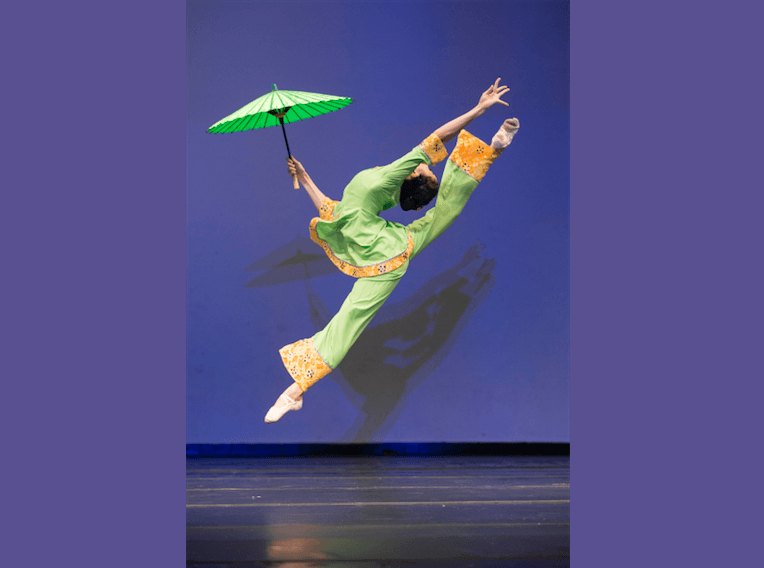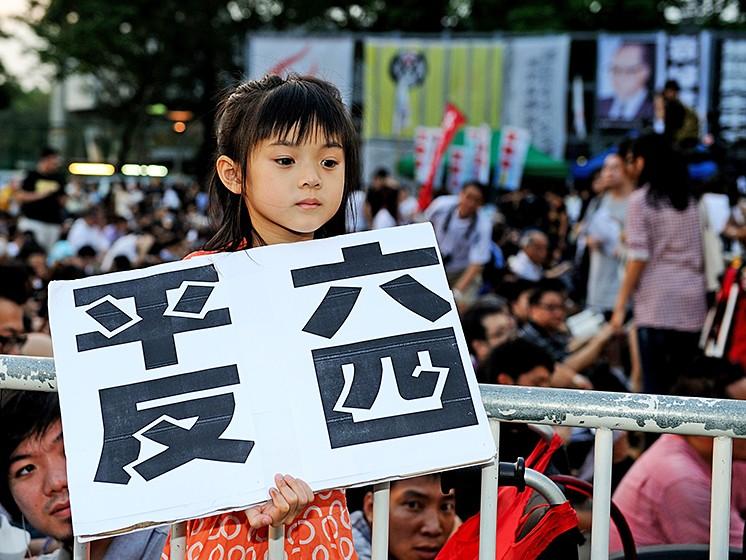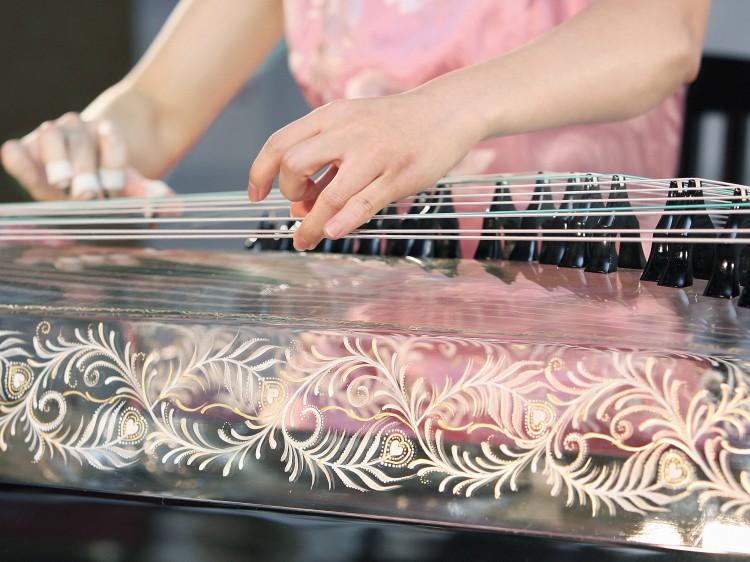Journey to the East: Handcrafted Fashions From Ancient Dynasties
A unique runaway show featuring dozens of exquisitely handcrafted Chinese costumes was on display in New York on Oct. 16.
Winna Lam, the Gold winner whose Tang Dynasty-inspired gown was awarded $10,000, walks around the stage with her model. Dai Bing/The Epoch Times
|Updated:



